The PowerWalker VI 1500 CSW UPS Review: Trying For True Sinewave on a Budget
by E. Fylladitakis on April 13, 2022 8:00 AM EST- Posted in
- Cases/Cooling/PSUs
- UPS
- PowerWalker
- BlueWalker
- 1500VA
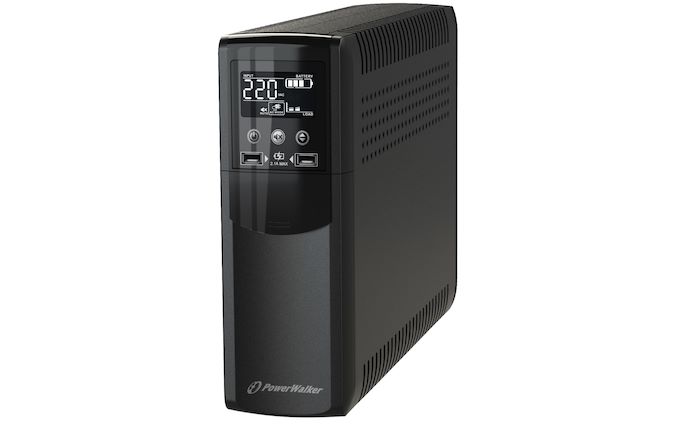
Editor's Note: Today we're kicking off a new review category for AnandTech: Uninterruptible Power Supplies. These devices are becoming increasingly common as desktop users are looking for laptop-like reliability. All the while, it's also an area that we feel is lacking in good, EE-enlightened systematic reviews. So our multi-talented power guru, E. Fylladitakis, is applying his skills to UPSes. As this is a new area for us, please let us know what you think in the comments below!
While Uninterruptible Power Supplies are hardly a new thing in the PC space, the tried-and-true battery backups for desktop PCs have been undergoing a resurgence in popularity in recent years. Improvements in power delivery technology such as GaNs have been reducing costs and improving reliability, and meanwhile lithium-ion batteries, with their much greater energy density/lower volume, are starting to make inroads on the UPS market as well. All the while, with laptops outselling desktops in the consumer PC market, a PC that doesn't shut itself down during a power outage is becoming the norm, rather than the exception. So what better time is there to take a look at UPSes?
To kick off our inaugural UPS review, we're starting with a 1500VA unit from BlueWalker. BlueWalker is a company that originates from Germany and specializes on the design and marketing of power-related equipment. The company was founded in 2004, making it one of the oldest household UPS/AVR manufacturers that still exist to this date.
BlueWalker is marketing their retail products under the PowerWalker brand name and has a very wide portfolio of both hardware and software products available. For today’s review, we are taking a look at the PowerWalker VI 1500 CSW, a 1500VA/900W UPS that boasts a true sinewave output.
| PowerWalker VI 1500 CSW | |||
| Power Capacity | 1500VA/900W | ||
| Output Voltage | 230 VAC | ||
| Input Voltage | 170-280 VAC | ||
| Type | Line Interactive | ||
| True Sinewave | Yes (ish) | ||
| Battery | Lead-Acid, 2x 12V/9Ah | ||
| Full Load Backup Time | 3.5min | ||
| Half Load Backup Time | 10min | ||
| Battery-Backed Sockets | 2 (Type F) | ||
| Surge Protected Sockets | 2 (Type F) | ||
| USB-A Outputs | 2 (2.1A) | ||
| Ethernet Surge Protection | Yes | ||
| LCD Display | Yes | ||
| Dimensions | 99 x 280 x 410 mm | ||
| Weight | 13.1 kg | ||
Given that BlueWalker is a German company, there should be little surprise that the PowerWalker VI is geared towards the European market. The UPS only outputs at a nominal 230V, and similarly, is only designed to accept voltages around that range (sorry, Americans!). Past that, this specific version comes with 2 battery-backed Type F sockets, as well as another two sockets with just surge protection. With 216 Wh of lead-acid battery capacity, it's rated to run a full load for a few minutes, stretching into the double-digits at a half load or less.
Of particular interest with this UPS is the price: true sinewave units have historically carried a significant price premium, but BlueWalker isn't charging nearly the same premium as true sinewave UPSes from other major manufacturers, making the PowerWalker VI 1500 CSW a much cheaper UPS – and at around €180, one that's popular on the market as a result. But can it live up to the same high power delivery expectations without the same wallet-busting price? Let's find out.
The PowerWalker VI 1500 CSW UPS
We received the PowerWalker VI 1500 CSW in a relatively simple cardboard box, with the heavy unit well-protected by thick packaging foam pieces. Inside the box, we found a CD with the compatible monitoring software, thorough manuals in several languages, and a USB cable.
The PowerWalker VI 1500 CSW is a tower-style UPS with an LCD screen at the front. Measuring only 410 mm deep, 100 mm wide, and 280 mm tall (16.2 in × 4 in × 11 in), it is very compact for a unit with that high of an output. There are also two USB charging ports at the front, right under the LCD screen.
The LCD screen, once turned on, will show the basic electrical figures of the unit, such as the voltage, the load, and the remaining battery time. It stays off most of the time and the user needs to press the power button momentarily in order to turn it on.
At the rear side of the tower, we find four power sockets. We are testing the version with the four Schuko (Type F) sockets, but BlueWalker also offers this unit with UK and FR sockets, plus a version with eight IEC socket.
Note that only two sockets offer battery backup, as the other two are for surge protection only. In fact, having just two sockets connected to the unit’s battery backup output is an atypically low number of powered sockets for a 1500VA UPS, as we usually see more.
Along with power protection, there is also a non-destructive circuit breaker and an Ethernet surge protection path (input-output jacks) available with the PowerWalker. Finally, there is a fan that will only turn on when the unit is running on batteries, charging its batteries, or in auto voltage regulation (AVR) mode. The AVR mode essentially has the unit running on grid power but forces the AVR circuit to operate, which may be useful in some situations where the power grid is energized, but very unreliable.
More than half of the front fascia is a door that must be removed in order to access the battery compartment. It is held in place by two small screws at the bottom side of the unit. Once removed, a very large connector can be seen that connects the batteries to the main unit. This needs to be unplugged in order to remove the batteries. If the batteries need to be replaced, the wiring must be unplugged and transferred to the new batteries. We found two Leoch 12V 9Ah batteries in the unit, connected in series (24V 9Ah output). Leoch is a Chinese manufacturer of batteries that is amongst the largest on the planet and whose products are considered to be of fairly good quality.
Cracking open the unit’s body, we can see the unit’s large transformer and circuitry. The transformer actually is not very large for the 1500 VA unit and the amount of cooling it receives from the fan is fairly low. This will not be a problem for the stock unit, where the batteries will likely last just a few minutes, as there will not be enough time for the transformer to overheat. Modifying the unit’s batteries to increase its autonomy in any way without greatly upgrading its cooling capabilities would be, however, nothing short of suicidal.
The power circuitry left us with mixed feelings. The relays are supplied by Golden Relays, a reputable manufacturer, yet the capacitors are supplied by Aishi and Jamicon, suppliers that are considered to be mediocre. Eight IRF3205 MOSFETs generate the output when the unit switches to its batteries, MOSFETs that are proven to be reliable but, having been released well over two decades ago, are nowadays very cheap and their performance is relatively poor compared to more modern MOSFETs. The workmanship is very good but the circuitry layout is fairly outdated.


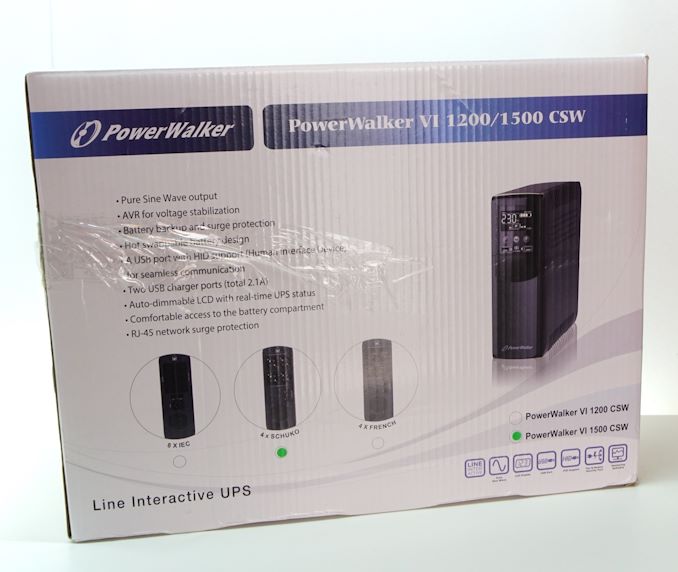

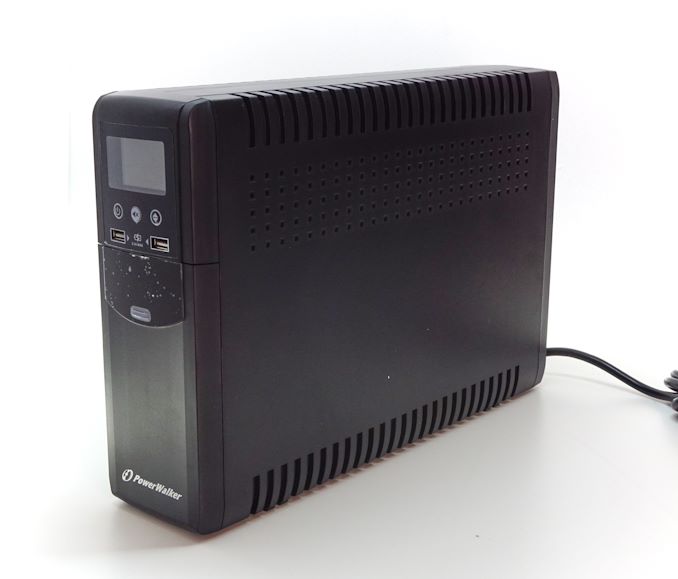
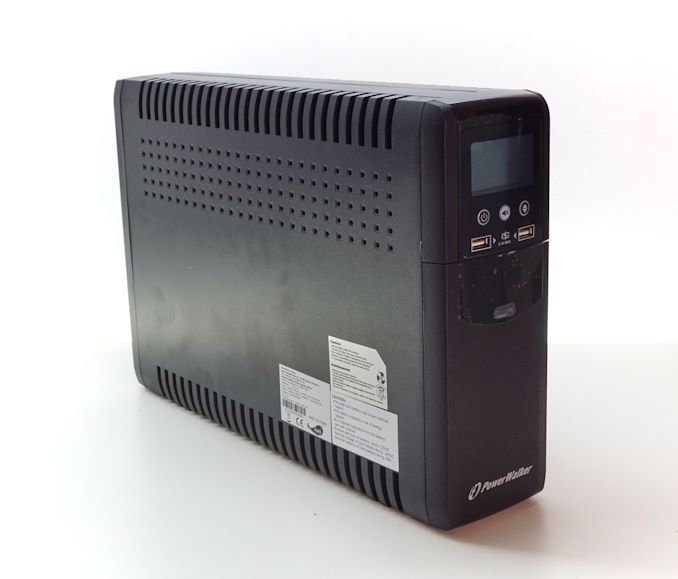
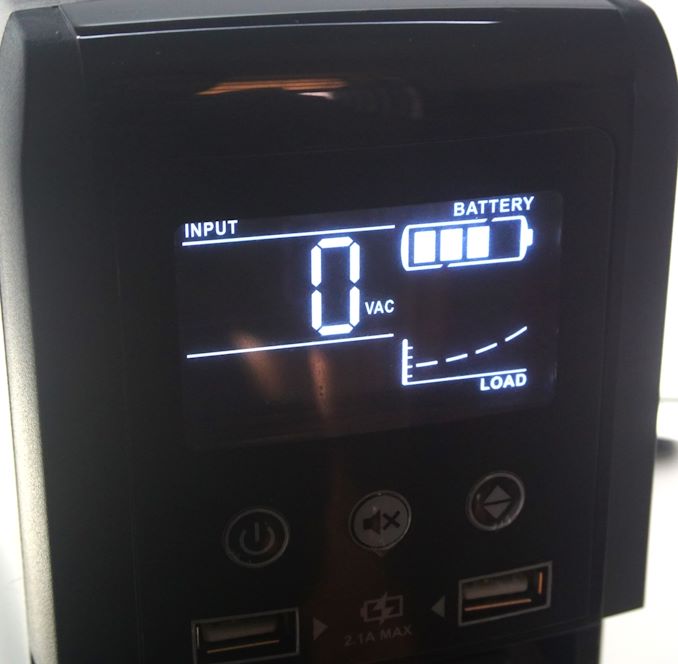

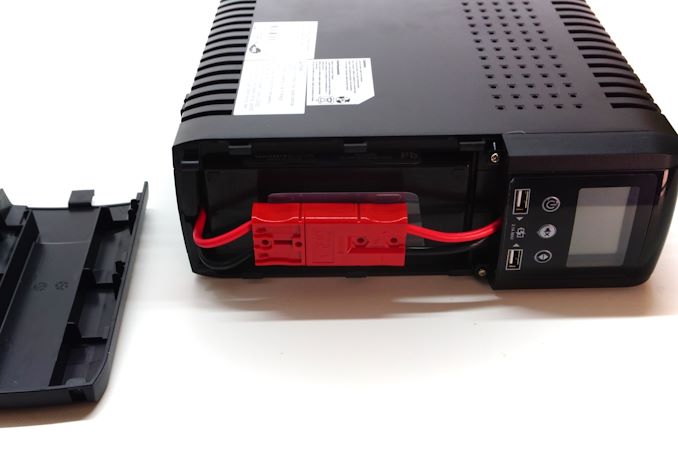
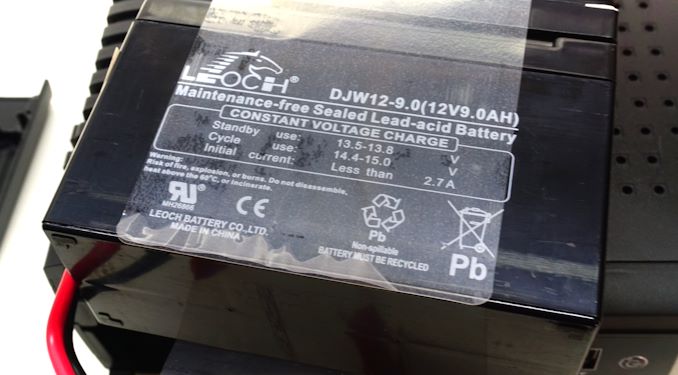
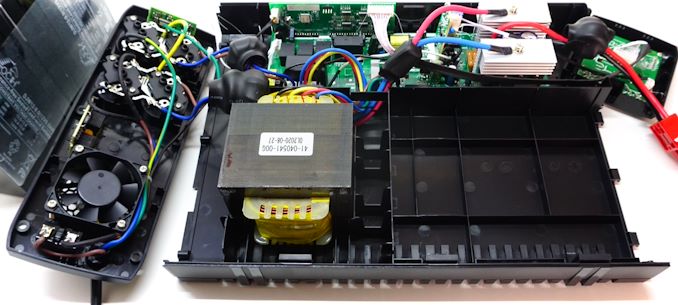

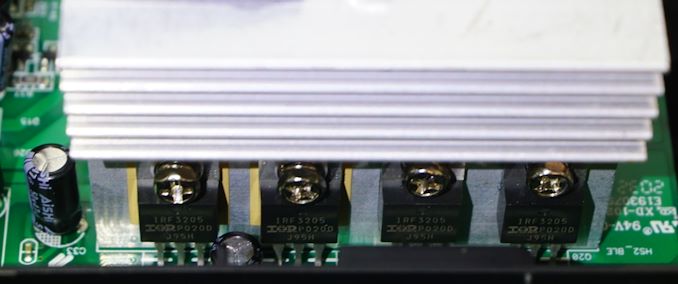

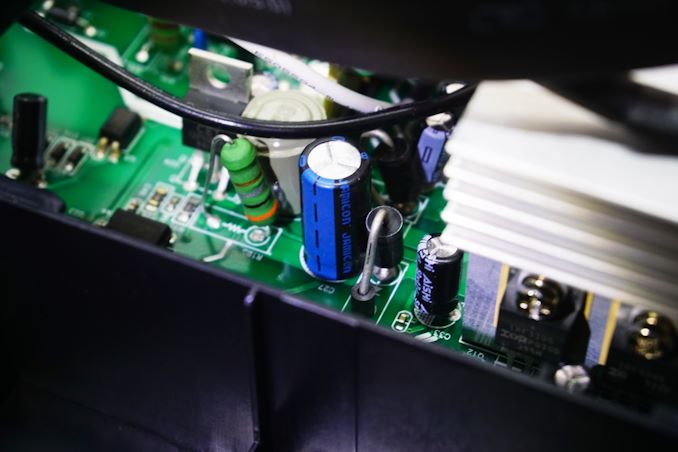
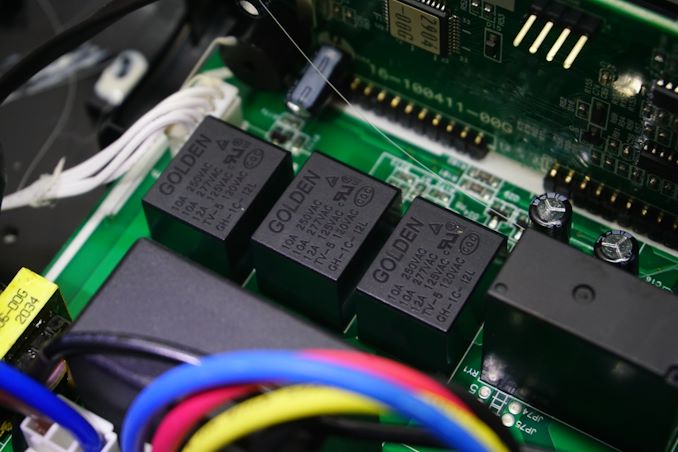








107 Comments
View All Comments
Ryan Smith - Wednesday, April 20, 2022 - link
It depends on reader interest, and how eager manufacturers are to sample. There's no reason we can't do 4-5 a year if the supply and demand are there.Oxford Guy - Thursday, April 14, 2022 - link
I read quickly but saw nothing about the fact that lead-acid batteries are permanently degraded by being discharged. The article mentioned a 12-hour recharge time for when the batteries have been completely depleted but didn’t mention the far more pertinent matter of lead sulphate. That is the chemical that forms when lead acid batteries are discharged, even partially. It is a byproduct of the degradation inherent in the tech.Lead-acid batteries have no place in a device like this. People who wish to debate that should truly look at the big picture. This is not a device like a car which has a workload defined by the battery usually being mostly fully-charged (the one workload that is suitable for lead-acid tech). The article said the batteries in this unit can be depleted in a matter of minutes. This device is designed around much heavier depletion than a car, making it fundamentally unsuited to the battery tech.
Why do manufacturers choose to use lead-acid batteries for devices with the wrong workload? They’re counting on buyers looking at things like sine wave output and wattage — the same thing this review does.
Perhaps the business model here is to sell replacement batteries to make up for the reduced pricing of its partial sine wave ability.
The irony of consumer-grade UPS devices has been mainly about how prone they are to dying. A computer surviving multiple lightning storms with a simple surge blocker is more likely than these UPS devices lasting long enough.
A useful review will not only warn about the unsuitability of lead-acid batteries, it will be in two parts — the second being a long-term lifespan report. See if you can get a few years out of these products. See how much uptime lead-acid batteries manage after multiple discharges.
I can see using lead-acid batteries in a device that has an optional ‘emergency mode’ where the user can decide to engage them when the lithium batteries are nearing depletion. This could be a cost-saving way to give the unit longer uptime at a lower price point — suitable only for workloads that are unlikely, but not completely, to need the extra runtime.
Oxford Guy - Thursday, April 14, 2022 - link
It’s also bait and switch fraud to claim sine wave output for a device that does not produce sine waves over most of its output range.That should not be hand-waved with excuses about what most people might use the device for. The product is being sold on a lie.
back2future - Friday, April 15, 2022 - link
what needs regulation for advertisement and technical description for standardized consumer support and information (and consumers understanding their usage profile, planed/scheduled repairs/upgrades, replacement parts available and costs including wear/maintenance/refirmation, before purchase) (?)mode_13h - Thursday, April 14, 2022 - link
> Lead-acid batteries have no place in a device like this.The typical usage model is that the user saves their work, shuts down their PC, and then switches off the UPS. You're not necessarily supposed to run until the battery is 100% depleted.
> A computer surviving multiple lightning storms with a simple surge blocker
Surge suppression won't save you from lost work and possible file or filesystem corruption due to abrupt reboots.
> the second being a long-term lifespan report.
Here's my lifespan report. All of my co-workers have APC UPS units at their desk. Sometimes, we lose power when people aren't around to switch them off, and most haven't gone to the trouble of configuring auto-shutdown. Yet, we still typically get about 5 years out of these batteries (possibly more). At home, I've gotten over 7 years out of mine, which I've run down probably at least 3 times.
Yes, Lithium Ion would be great. However, as noted in other comments, there's a cost differential. And Lithium Ion have other tradeoffs.
You make some fair points, especially with your reminder about minimizing depletion of lead acid batteries. I definitely want to acknowledge that.
DanNeely - Friday, April 15, 2022 - link
I generally get 4 years/battery pack at home; OTOH my high power desktops (running distributed computing 24/7) mean I need a larger than normal chunk of the nameplate capacity to avoid an immediate shutdown on power loss.And with maybe 2-6 interruptions longer than a few seconds/year decay due to discharge cycles is basically irrelevant. (I find the person upthread ranting about the use of lithium batteries only good for several hundred rather than several thousand cycles upthread hilariously divorced from how typical UPSes are used.)
Oxford Guy - Friday, April 15, 2022 - link
Mr. Neely:Lead-acid batteries die partially whenever they are depleted, even partially. That is a the opposite of irrelevance unless the device is never used.
Being happy with a four-year lifespan is also quite debatable.
Oxford Guy - Friday, April 15, 2022 - link
Defining that lifespan is also fraught since it varies wildly by the circumstances and how each person defines the lifespan. One may claim the product is still working when the battery can only manage 15% of its original charge. Another will wait until the product simply doesn’t power up or whatever.mode_13h - Friday, April 15, 2022 - link
I define "lifespan" as "when the UPS tells me to replace the battery". I have no idea what that actually means, in terms of raw capacity, because my experience is that a UPS in that state won't even *try* to give you any runtime.I would advise people not to buy UPS batteries in advance, because they have some degree of self-discharge. And, as we've discussed, you don't want to them to have any significant amount of discharge.
For the same reason, I advise people to keep every UPS plugged-in (at least some of the time), even if they're not using it.
Oxford Guy - Saturday, April 16, 2022 - link
The numerous units we (myself and colleagues) have purchased have failed. It hasn’t merely been the batteries. That includes models claiming sine wave output. I am thoroughly unimpressed with what I have seen so far in terms of ‘affordable’ UPSs.